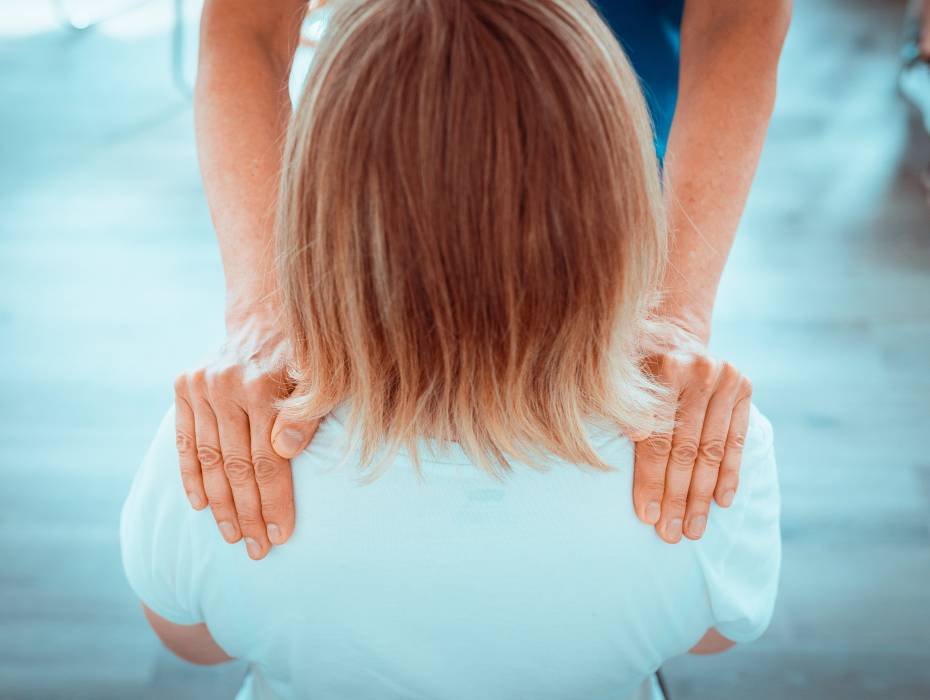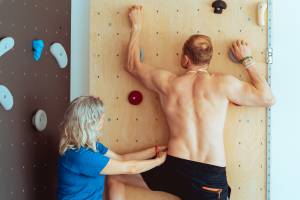For the PNF therapist, the main priorities are your health and wellbeing.
We believe that using the positive approach with functional training we can mobilize reserves of the patients, which can then be used to improve their functioning level and therefore positively affect their quality of life.
PNF use the principles of motor learning and motor control as building blocks in the reeducation process of patient rehabilitation. These principles are well-documented in current literature and are an indispensable part of the physiotherapy process.

-
How do you know in this moment, that you are sitting? Why is your hand able to move the computer mouse?
Usually, one only thinks about these things when the movements become difficult to do or do not function at all! This is where PNF comes into play!
We hope the following information will be helpful for you. If you need further information, please contact your PT or one of the therapists mentioned on the website. As the PNF Association is an international association you can easily find a therapist working with PNF all over the world as well as in your own country.
-
How does body movement work?
An interaction between the brain and muscles is required for every posture or movement of the body; on the one side, to steer and control the movement, on the other to perceive the movement. This mainly happens automatically and subconsciously.
There are different sensory organs such as the nose, eyes, ears, and skin that your body uses for perception or awareness. Within these organs, there are so-called exteroceptors that make it possible for the organs to receive information from the environment.
There are also receptors in your muscles, nerves, tendons, and joints: the proprioceptors. The proprioceptors make you aware of how your body is moving as well as let you know in which position or posture you are in at the moment. This is how you know, for example, if you are bending or straightening your knee, if you are sitting straight or crooked, how you are moving your hands, etc.
The communication between the brain and the respective body part is conveyed via nerves. The PNF method addresses this interaction between the brain, nerves, and muscles resulting in movement and posture of the body parts.
The abbreviation PNF stands for, “Proprioceptive Neuromuscular Facilitation”. The name means that PNF therapy specifically stimulates all these receptors and activates them. This therapy stimulates the interaction between the nerves and muscles – the Neuromuscular system- which makes everyday movements much easier “Facilitation”. For example, after an operation on the hips, knees, back, or after a stroke, there is a good possibility that the interaction in the neuromuscular system is disturbed. Possible consequences are that you have limitations or are unable to perform certain movements or postures which make daily activities more difficult, possibly requiring the assistants of others.
-
How does PNF therapy work?
The therapeutic goal is to improve the conscious and subconscious control of body posture and movement. PNF can also support life-sustaining functions such as breathing, chewing, speech, or swallowing. These functions are sometimes impaired with severe illnesses or injuries.
The clinical assessment is the start of every therapy treatment with PNF. The assessment is done through questioning as well as measurement to define the momentary situation regarding your movement, posture and activity capabilities, your movement or activity problems as well as to describe the progress you have made up to this point. You will also discuss your treatment goals and tell the therapist specifically what you would like to improve or re-learn; for example, how to reduce pain, to learn a specific activity such as stair climbing, to increase muscle strength, or to find out which assistive devices might help you in your daily life.
Your mobility will be developed through working on sequences of movements and activities such as getting out of bed, walking, or climbing stairs. The therapist will awaken your movement reserves and potential through targeted facilitation and encouragement.
In order to do this, you work actively with your PNF therapist. He or she will set up an individual training program in which the coordination between the specific muscle groups is targeted. The PNF therapist will use hands-on manual resistance which activates and enhances the work of the exteroceptors and proprioceptors as explained above. This makes it possible for you to re-learn movements and activities or regain postural control. Often one can mobilize hidden resources which allows you to perform activities that before were difficult or impossible!
As a result of your disease or accident basic movement sequences such as these could be affected:
• Eating
• Swallowing
• Speaking
• Breathing
• Maintaining balance
• Ability to use your hands effectively – dexterity
• Comfortable, pain-free sitting
• Independently Stand up from a chair or get out of bed
• Secure walking in and outside of your home
• Climbing stairs
• Everyday activities such as brushing your teeth, watering flowers, mowing the lawn…
• Independent dressing -
For whom is PNF therapy recommended?
PNF therapy has been proven effective in many studies. It is appropriate for persons of all ages with problems in the neuro-/musculoskeletal systems. The therapy goal is to recover secure, independent, pain-free movement and activities. A PNF treatment is particularly recommended for persons with movement or posture disorders due to:
• Multiple Sclerosis
• Spinal cord injury
• Stroke
• Parkinson’s Disease
• Traumatic Brain Injury
• Arthrosis
• Rheumatoid Arthritis
• Postural disorders; Scoliosis
• Joint surgery; Hips, knees, shoulders, spine
• Sport accidents
